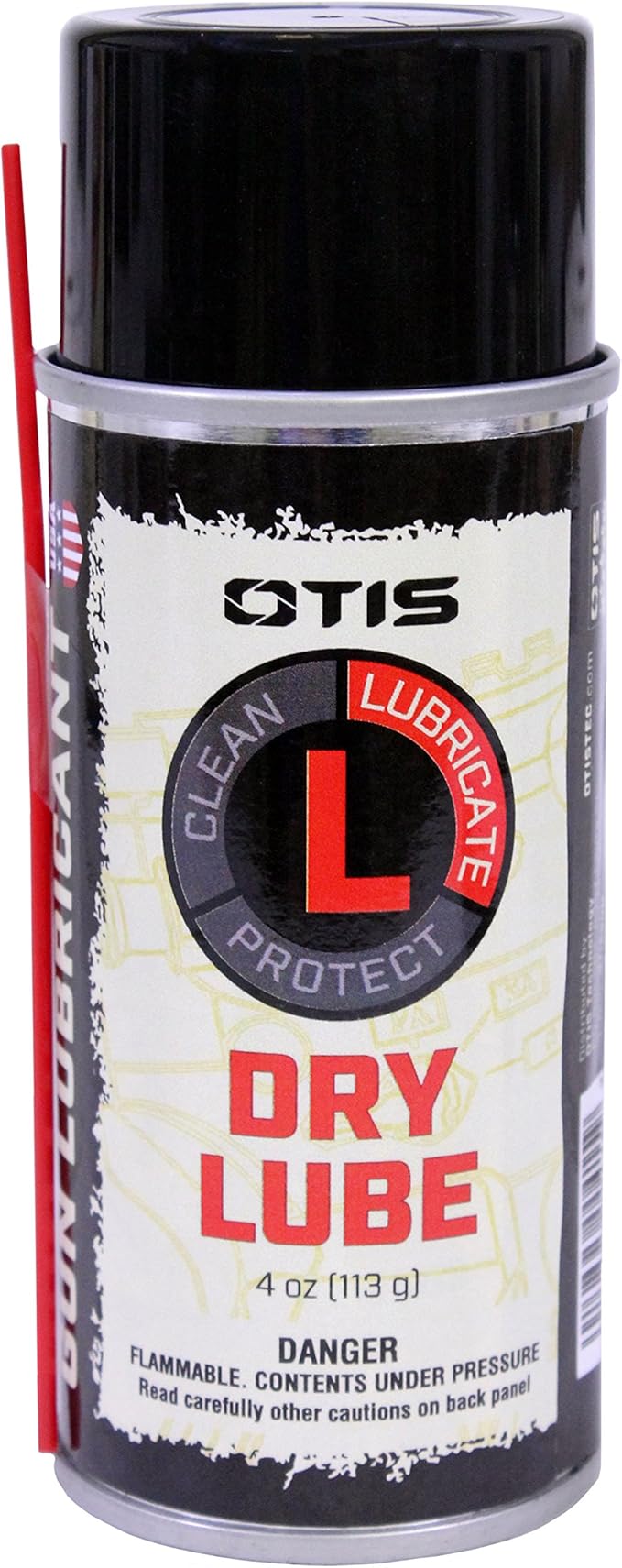
Posted on 08/06/2024 7:23:56 AM PDT by MtnClimber
The magazine is as critical as the firearm and ammo we use. A large percentage of firearm malfunctions can be attributed to magazine-related issues, which is an important reason to always carry a spare mag. This being the case, it is surprising how little attention is paid to this critical component. A gun is only as reliable as its magazine.

Cleaning and maintaining your magazines is just as important as cleaning and maintaining your pistol or selecting the right ammunition. If you get a magazine malfunction, test it again. If it creates a second malfunction, immediately take it out of duty until the problem can be ascertained and remedied or use the magazine for training purposes only. The best option, of course, is to simply get a new magazine.
Magazines should be routinely examined for wear or damage. Check the body of the magazine for dents/cracks or other damage. Inspect the feed lips. One common test is to half load a magazine and smack the base on a hard surface to see if a round pops out. This will help you determine if the feed lips are spread and/or the magazine spring is weak. However, keep in mind all magazines will release tension on the top rounds, allowing one or more rounds to pop out when tested in this manner.
Magazine Loaders
Loading magazines by hand can be a slow and often painful process, particularly when loading the last few rounds into a new or stiff magazine. Some sub-compact pistol magazines and reduced-capacity state-compliant magazines are notorious in this regard. Moreover, manual loading can cause unnecessary wear and potential damage to the magazine.
A magazine loading device provides a mechanical advantage that can not only speed up the loading process and save your fingers, but more importantly prevent unnecessary stress and wear to the feed lips from the loading process. Damage to these lips can lead to feeding problems in your gun. A magazine loader also helps preserve the spring by minimizing the need for manual spring compression. It can prolong the service life of your magazines, ensuring reliable performance when it matters most.
There are a lot of different magazine loaders on the market, which can make choosing one a bit confusing. When selecting a magazine loader, keep these considerations in mind: magazine compatibility; quality and durability; user-friendliness and ergonomics; and size and portability. Check reviews and, if possible, try before buying.
Spring Fatigue
Storing a magazine loaded does not typically weaken the spring. Magazines are designed to endure long periods of compression without significant spring fatigue. Even when fully compressed, magazines retain energy well beyond the life of the stored ammo. There are reported instances where magazines have functioned flawlessly after a century of being fully loaded.
However, it is advisable to rotate the magazines periodically to ensure reliable performance. If you notice feeding issues, failure to lock back the slide, or unreliable ammunition feeding, it might be time to replace the spring. There is no need to unload your magazines when not in use. Keeping them loaded will usually not cause any issues with reliability or spring fatigue.
Spring fatigue in magazines is typically caused by the repeated compression and release of the spring, also known as “cycling.” Over time, this cycling can weaken the spring, especially in areas where there may be tiny imperfections in the metal. The rate at which this happens depends on the type of metal used and the frequency of cycles.
Many shooters keep two sets of magazines — one set for training or competition and one set for personal defense or duty.
Disassembly & Cleaning
Magazines will need to be periodically disassembled for cleaning and further inspection. Don’t overdo this. Disassembly should be done only as necessary. Routine disassembly is unnecessary and can cause unnecessary wear. Magazines don’t need to be cleaned after every range session. After a high amount of shooting or exposure to the elements or dirt and dust, cleaning is called for.
Disassembly methods will vary, but most modern magazines are designed for easy disassembly and cleaning. With the spring and follower removed, run a dry cloth through the magazine body several times. You can use a toothbrush to scrub inside the body or a purpose-designed mag brush.
The spring and follower should be carefully examined for signs of wear or damage. All magazine springs will fatigue over time. Compare the spring to a new spring or spring that’s known to be good. If the old spring shows signs of fatigue — that is it is noticeably shorter — it’s time to replace it or discard the magazine. Pay particular attention to any signs of chipping or cracking of the follower. Any loose chips in the magazine body are a sure indicator of follower damage.
If a magazine has worn or damaged parts, either discard the magazine or replace the parts and use the magazine exclusively for training. Training-only magazines must be clearly marked to prevent them from being mistaken for a personal defense or duty magazine.
Do not lubricate or leave any oils or lubrication inside the magazine or its components. Not only is it unnecessary, it will also become a dirt magnet. I just wipe them down with a silicone cloth.
Final Thoughts
Finally, don’t get too attached to your magazines. All magazines will eventually wear out. They are disposable items. And don’t scrimp on quality to try and save a few bucks. Your life and the lives of others are worth more than the price of a new magazine.
Also, this silicone spray is supposed to be safe on plastics so the follower and floor plate should be safe with this spray.
According to Larry Vickers, there are two things you can with any weapon fed by a detachable box magazine to reduce stoppages by half.
#1, download it a round or two. This isn’t about the lifespan of the spring but it’s about the tension between the top round in the magazine against the bottom of the slide/bolt. Most double-stack pistol mags these days are stuffed so tight that it’s almost impossible to load the final round by hand. And you often can feel the interference that causes between the top round and the slide when you’re seating a fully-loaded magazine. But you don’t get that if you download a round or two.
The original 20-rd M-16 STANAG magazine was notably susceptible to this. The problem was mostly cured with the 30-rounders but GIs being GIs they conflated the problem with the 30-rounders as well.
Nothing to do with Vicker’s point but it also bears mention that in his 300,000 round torture test of a Glock 17, the late Chuck Taylor found that it extended the life of magazine springs by 5000 rounds to only load 15 rounds in the 17-rd magazine. Probably not something you need concern yourself with if you’re not shooting 10,000 rounds year.
On the other hand, the only time it’s even possible to have too much ammunition is if you’re drowning or on fire.
#2. Seat, then tug. Slap if you like but once you’re CERTAIN the magazine is seated and locked in, give it a tug, just to be sure. More a point for long guns (or handguns with extended magazines) because most standard handgun magazines don’t leave enough exposed to get purchase on so you can pull. But for ARs & pistol cartridge carbines, I do this religiously. Seat, tap, tug.
LAV sends.
You won’t regret it. I have one, and I bought my wife one. I got it to load my Glock 26 magazines. I couldn’t put the last couple of rounds in the mags by hand, but I do have arthritis.
With the UpLULA it’s stupid easy to load mags all day long.
It even works with some single stack mags. It works on my wife’s Glock 42 mags, but not with my Ruger LCP mags. It’ll work with just about any .45 ACP single stack 1911 magazine.
I agree that reducing the rounds in a magazine (at least by one) makes magazine seating and reducing friction drag on the slide (for pistols) or the bolt carrier group (for AR or AK) makes sense. I have noticed these things, but had not formally implemented this procedure. I think it is a good thing to do to gain reliability at penalty of a small reduction in ammo count.
1911s here.
Use seven-round magazines as Saint john Moses Browning designed them. He knows a LOT more than I do about these things.
Have a few eight-round magazines that came with the sidearms, they get seven rounds. Yeah that last round is a little tough to load so I don’t.
Y’All Take Care.
Before I sold all my fire arms and related gear to the local Unitarian Universalist Church Gun Buyback, my favorite loader was the Ruger 10-22 crank loader. You could dump 100 rounds in it, snap in the magazine, and just crank the handle to load the 30 round “banana mags” in a few seconds. Great fun when you use to be able to find .22lr for less than a penny a round.


This Ping List is for all news pertaining to infringes upon or victories for the 2nd Amendment.
FReepmail me if you want to be added to or deleted from this Ping List.
More 2nd Amendment related articles on FR's Bang List.
We love our Maglulas. Rock solid and very affordable.
Made in Israel IIRC.
L
Looks like a great Fathers Day present...
Agree completely
I’d never get more than 5 rounds in my SIG P365 mag without one of those.
Yes - a magazine loader is a must for P365 magazines. It was really hard on my thumb; I was surprised the first time I tried it. Thankfully, I already had one in my range bag.

Thank you!
Once upon a time I walked into a gun store and emptied a full money clip into the hand of the guy behind the counter.
Disclaimer: Opinions posted on Free Republic are those of the individual posters and do not necessarily represent the opinion of Free Republic or its management. All materials posted herein are protected by copyright law and the exemption for fair use of copyrighted works.